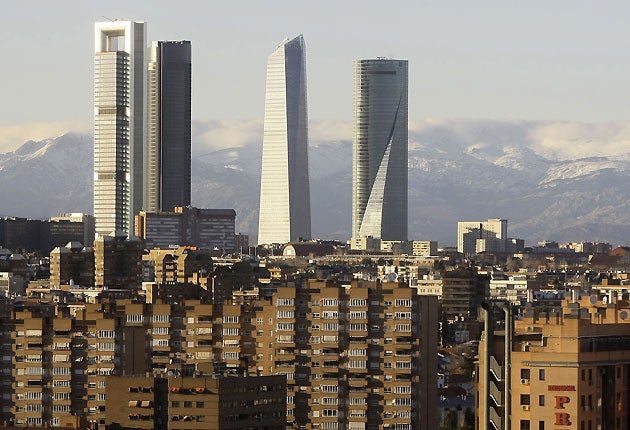Why Madrid isn't be be sniffed at

Your support helps us to tell the story
From reproductive rights to climate change to Big Tech, The Independent is on the ground when the story is developing. Whether it's investigating the financials of Elon Musk's pro-Trump PAC or producing our latest documentary, 'The A Word', which shines a light on the American women fighting for reproductive rights, we know how important it is to parse out the facts from the messaging.
At such a critical moment in US history, we need reporters on the ground. Your donation allows us to keep sending journalists to speak to both sides of the story.
The Independent is trusted by Americans across the entire political spectrum. And unlike many other quality news outlets, we choose not to lock Americans out of our reporting and analysis with paywalls. We believe quality journalism should be available to everyone, paid for by those who can afford it.
Your support makes all the difference.Air pollution has long been a fact of life in Spanish cities, but scientists now say it is not just smog that chokes people as they walk to work or stroll through the park. A new study has found the air in Madrid and Barcelona is also laced with at least five drugs — most prominently cocaine.
The Superior Council of Scientific Investigations, a government institute, said on its website today that in addition to cocaine, they found trace amounts of amphetamines, opiates, cannabinoids and lysergic acid - a relative of LSD - in two air-quality control stations, one in each cities.
But it said there was no reason for alarm.
"Not even if we lived for a thousand years would we consume the equivalent of a dose of cocaine by breathing this air," scientist Miren Lopez de Alda said in a statement.
The scientific group stressed that "in no case should these levels be considered representative of the air in the two cities." It said the tests were done in areas where drugs were likely to be consumed.
In Madrid, the test site was close to a ruined building believed to be frequented by drug dealers. And in both Madrid and Barcelona, the studies were carried out close to universities.
The group said the study showed higher concentrations of the components on weekends, suggesting that drug consumption was up in these periods.
The research found cocaine in concentrations ranging between 29 and 850 picogram per cubic meter of air. A picogram is one-trillionth of a gram.
Mar Viana, another researcher who worked on the project, said the levels were far higher than those found in similar studies in Europe. She said one study in Rome and Taranto in 2007 revealed cocaine levels of 100 picograms per cubic meter.
According to the U.S. State Department, Spain is Europe's largest consumer of cocaine and hashish. It is also a major transit point for narcotics shipments from South and Central America as well as Africa.
The scientists detected the drug by placing quartz microfiber filters in the air-testing stations. They said the method was new and could help in measuring drug use in towns and cities in a fast and anonymous way.
The group said the findings would be published in the US journal Analytical Chemistry.
Join our commenting forum
Join thought-provoking conversations, follow other Independent readers and see their replies
Comments